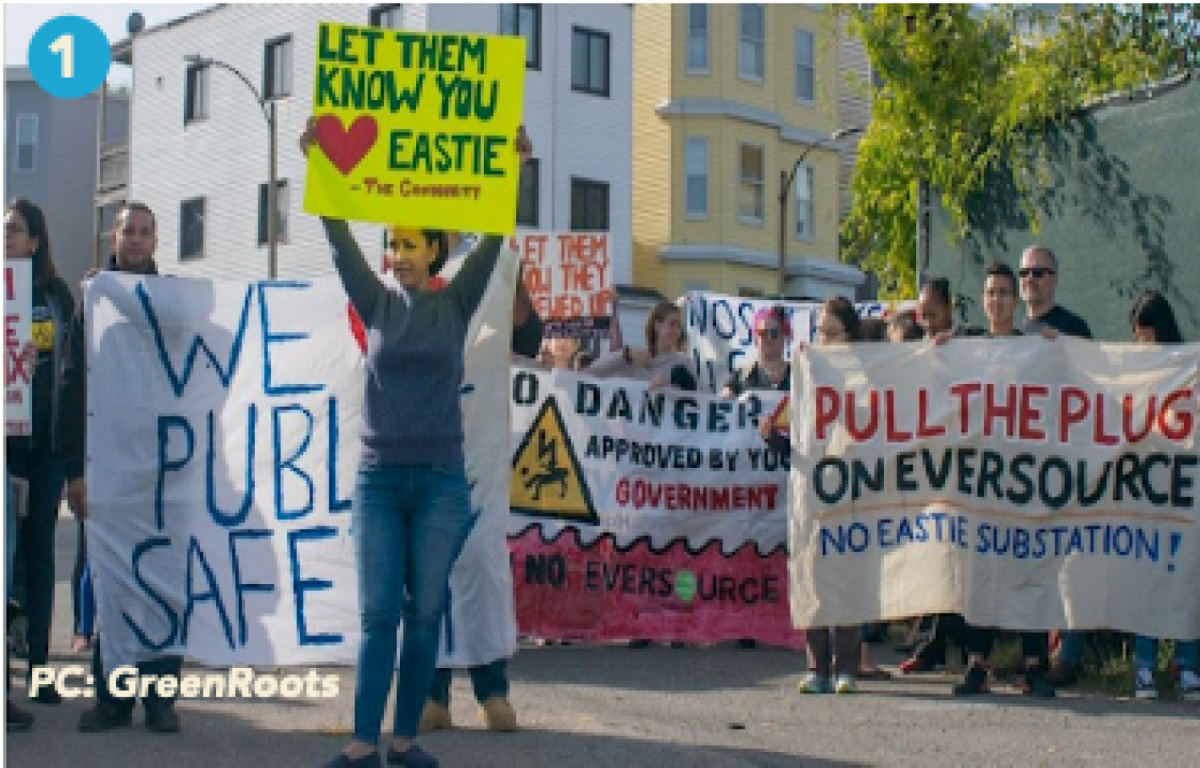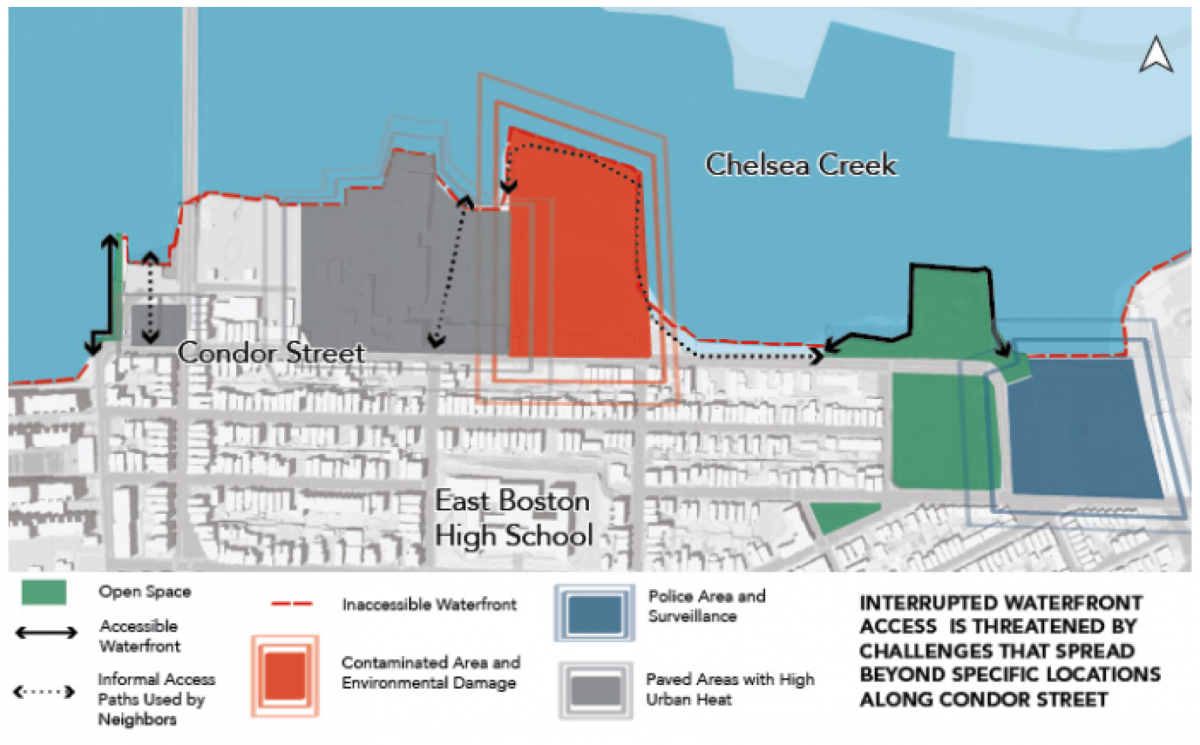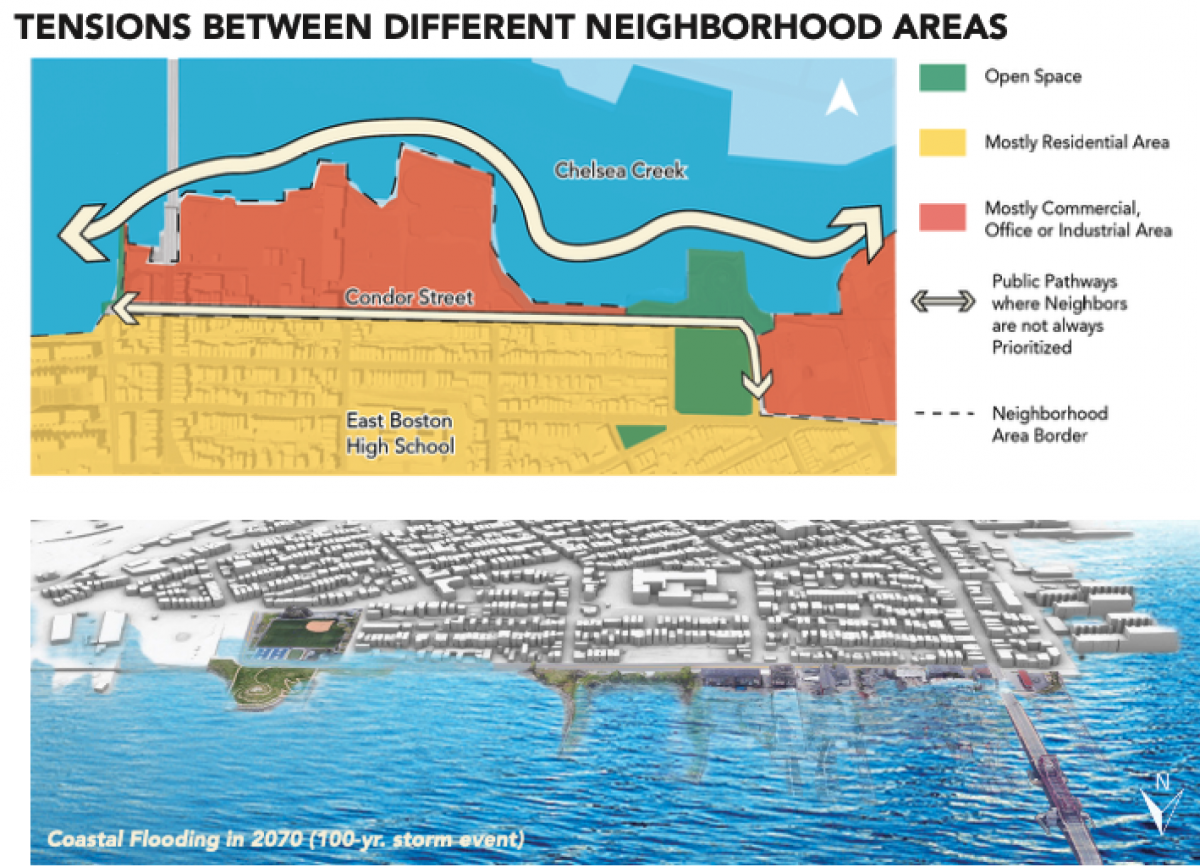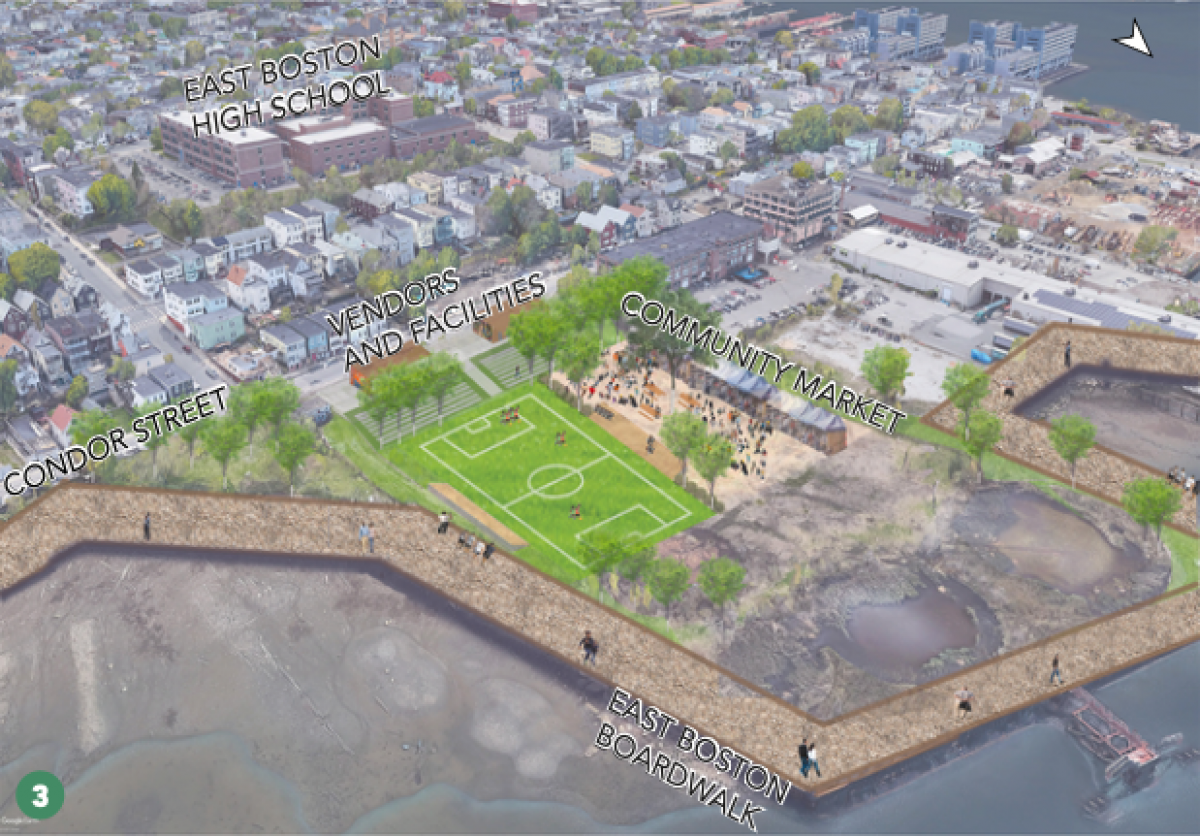




LATINO FUTURES FOR CONDOR STREET
Come along with us as we unfold histories of resistance and solidarity on Condor Street in the Eagle Hill neighborhood. We hope that by exploring this industrial waterfront together, we can create a vision for spaces that welcome all.

SOLIDARITY AND RESISTANCE IN EAGLE HILL

History & Current Conditions
Eagle Hill -- and Condor Street in particular -- has been the site of intense contestation in recent years. Locally-led resistance has formed in response to key threats to local health and well-being including deportation, displacement, and environmental injustices. East Boston, a state-designated Environmental Justice Community, is a community that is 64 percent people of color and 54 percent immigrants. This designation means that a community’s income is less than the state’s median income, at least a quarter of the population identifies as a race other than white and about a quarter of the community experiences some form of isolation from the English language. This area faces a variety of environmental hazards, such as noise and air pollution from Logan International Airport, traffic congestion, highways, storage of fuel, manufacturing processes, as well as storage of road salt and sand along the Chelsea Creek.
An electrical substation which the utility Eversource is proposing for a flood-prone area near Chelsea Creek has drawn protest from neighbors worried about flood risk and safety. Eversource says their project -- across the street from a popular playground and near tanks of jet fuel for Logan Airport -- poses little risk to the public. Because substations can catch fire and explode, some neighbors are trying to stop it. In May 2021, Acting Mayor Kim Janey publicly joined the long battle environmental justice advocates have taken on by calling on the utility to either justify or cancel its plans.
Methods
Condor Street’s long history with industry has earned it placement as one of the Massachusetts’ Designated Port Areas, which have been created under a set of regulations aimed at preserving water-dependent industrial uses. Chapter 91, a state licensing program aimed at promoting access to waterways, comes into conflict with DPA zone regulations at sites like Condor Street, where the DPA zone has historically overridden waterfront access rights. There is potential for the Condor Street community to weigh in on these uses through the ongoing East Boston DPA Boundary review process, Climate Ready East Boston planning process and PLAN East Boston process.
Situated between the McArdle Bridge and the Chelsea Street Bridge, the half-mile of east-west road Condor Street provides is at the nexus of industry, neighbors and recreation. Ownership of the properties fronting Chelsea Creek is largely private and the owners have favored industrial and maritime uses such as a private harbor and auto repair businesses. However, the Boston Planning and Development Agency owns the 8-acre brownfield site formerly owned by Hess Oil. On Condor Street’s eastern end, the public is the steward of the Condor Street Urban Wild and a small site at the west end of Condor Street called the Condor Street Overlook is also publicly owned.


Site Planning Process
On one hand we have the DPA zone’s goal of preserving industrial space and on the other, Chapter 91’s charge to increase public waterfront access. This tension gave rise to our concept to extend Boston’s Harborwalk on and around Condor Street. This proposed path will connect the Condor Street Overlook on the eastern end of the street to the Condor Street Urban Wild on the street’s western end.
We also suggest converting the first floor of an industrial building on Condor Street into a machine shop or makerspace. Autobody work is a common industry along Condor Street, but mechanics must take classes or apprentice in order to get into higher paying positions. On the second floor, we envision a commercial kitchen for local food businesses and culinary arts classes. On the top two floors, we imagine meeting rooms and computer labs that can be reserved for immigrant legal and social services, programming classes, and studying.
Finally, Our team suggests the development of a new soccer field for Eagle Hill. This opportunity matches the lack of appropriate cultural amenities in the area with opportunity of an undeveloped city-owned lot at 148 Condor St. This idea would not only serve the needs of recreation in the community, but it would also work as an extension of East Boston High School given that it lost part of its access to a local soccer field now shared with Suffolk University.
Site Plan



